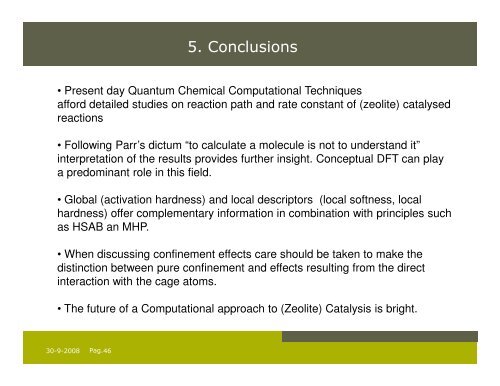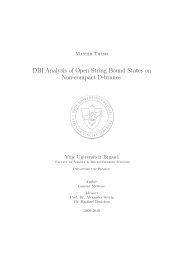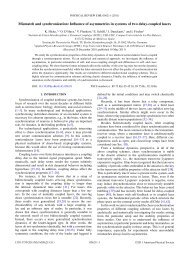DFT Reactivity Descriptors and Catalysis - Vrije Universiteit Brussel
DFT Reactivity Descriptors and Catalysis - Vrije Universiteit Brussel
DFT Reactivity Descriptors and Catalysis - Vrije Universiteit Brussel
You also want an ePaper? Increase the reach of your titles
YUMPU automatically turns print PDFs into web optimized ePapers that Google loves.
5. Conclusions<br />
• Present day Quantum Chemical Computational Techniques<br />
afford detailed studies on reaction path <strong>and</strong> rate constant of (zeolite) catalysed<br />
reactions<br />
• Following Parr’s dictum “to calculate a molecule is not to underst<strong>and</strong> it”<br />
interpretation of the results provides further insight. Conceptual <strong>DFT</strong> can play<br />
a predominant role in this field.<br />
• Global (activation hardness) <strong>and</strong> local descriptors (local softness, local<br />
hardness) offer complementary information in combination with principles such<br />
as HSAB an MHP.<br />
• When discussing confinement effects care should be taken to make the<br />
distinction between pure confinement <strong>and</strong> effects resulting from the direct<br />
interaction with the cage atoms.<br />
• The future of a Computational approach to (Zeolite) <strong>Catalysis</strong> is bright.<br />
Pag.<br />
30-9-2008 46
















